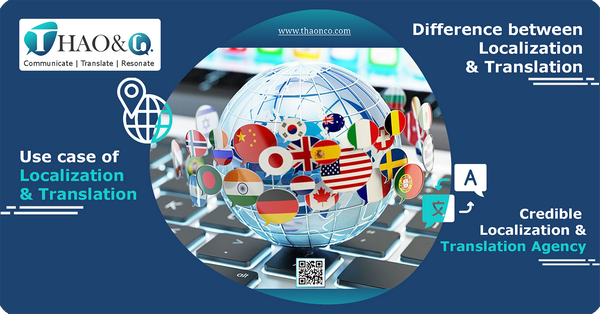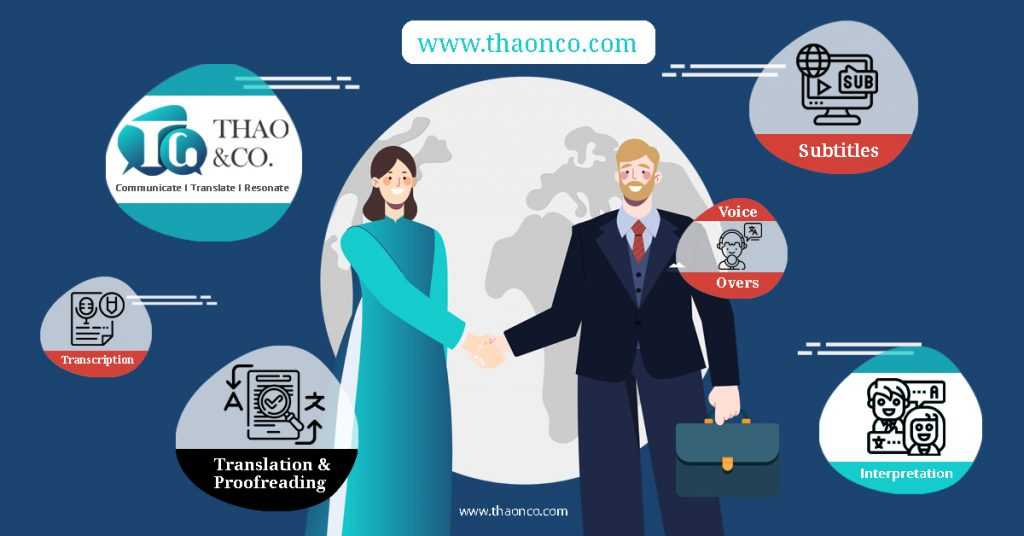Localization and translation are two important processes that complement each other to produce a flawless final product. These tasks not only help you convert languages but also ensure that your content meets the unique cultural standards of the preferred language. So, what sets these two processes apart, and which service should you choose? All will be answered in this article.
Translation is the process of converting the source language to the target language. On the other hand, localization is the process of adapting content and language to fit the target culture. Content should be translated in a way that is appropriate to cultural standards and serves a specific group of audience.
Overall, translation and localization both involve converting languages and aim to help the audience read and understand content easily.
Translation breaks down language barriers, while localization not only surpasses them but also adjusts the product to be compatible with the culture of the target audience. In other words, translation is just a subset within the larger realm of localization. Nevertheless, these two still have certain differences.

Translation is used to build and convey content into the target language. However, localization requires more than just language skills; it calls for a deep understanding of the cultural standards of the region, locality, or country. A perfect translation sets a good premise for the localization process. Therefore, it is best to consider a professional translation service to ensure the most accurate translation.
Images and icons are heavily influenced by cultural associations. An image or icon may be relevant in one country, but it doesn’t mean that in other countries that symbol is appropriate.
For example, in most English-speaking countries, the “👌” symbol means approval. However, in France, it may be understood as “zero,” while in Japanese, some may even interpret it as a signal asking for “money.”
This is a crucial consideration in the localization process. Graphics, icons, symbols, and colors need to be adjusted to align with the cultural standards of the target language.

The layout and format of the text can also change during localization. Text length, writing style, fonts, and font sizes – all need careful adjustment in the localization process to ensure a high-quality final product.
For example, Arabic and Hebrew languages are read from right to left, while English and Vietnamese are read from left to right. Font choice is another crucial factor, as the target language might not support the same fonts as the source language and vice versa. Experts should then select fonts that convey a similar tone to the original language.
As mentioned earlier, translation is the starting point for localization and serves as a strong foundation for the subsequent localization process. Therefore, the localization process also requires a professional and experienced team to collaborate and work together.
While translation may only require a team of translators with the ability to convey content from one language to another, localization calls for seamless collaboration between translators, localization experts, and software or application developers. This collaboration ensures that content aligns with the cultural standards of each country and region, ultimately expanding the reach to a wider group of users.
Testing is a term in programming. In localization, this testing phase is referred to as localization testing. The goal is to ensure that the localized software, apps, or websites operate smoothly.
Localization testing involves checking language aspects as well as cultural standards of the target language, functionality, and the interface of websites or applications after translation. It also assesses the flexibility and compatibility of software and applications in the target market.
Localization and translation share the main function of converting language to convey content and messages to different audiences. Therefore, it is advisable to carefully consider your needs and budget to choose a high-quality service that is most suitable for your product.
If you are a game publisher, website developer, software developer, or owner of technical, specialized, or marketing documents, then localization is the top choice. Additionally, it is best to consider a reputable localization service to optimize user experience and attract potential customers.

One of the professional translation agencies you can consider is Thao & Co. Here’s how our translation and localization services can help your product:
Click on the Get a Quote button and leave us your project details to receive a prompt consultation today or visit our App, Software, Website, and Game Translation & Localization services page to find out more!